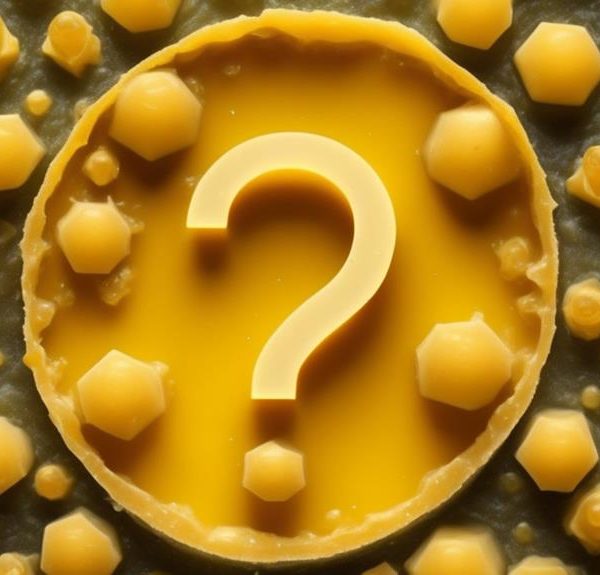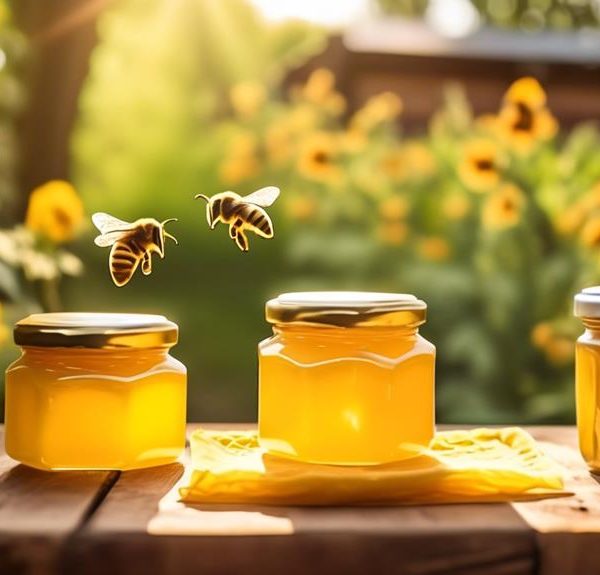Pondering whether beeswax can purify your home's air? Dive into the science behind this natural substance's claimed air-cleansing properties.
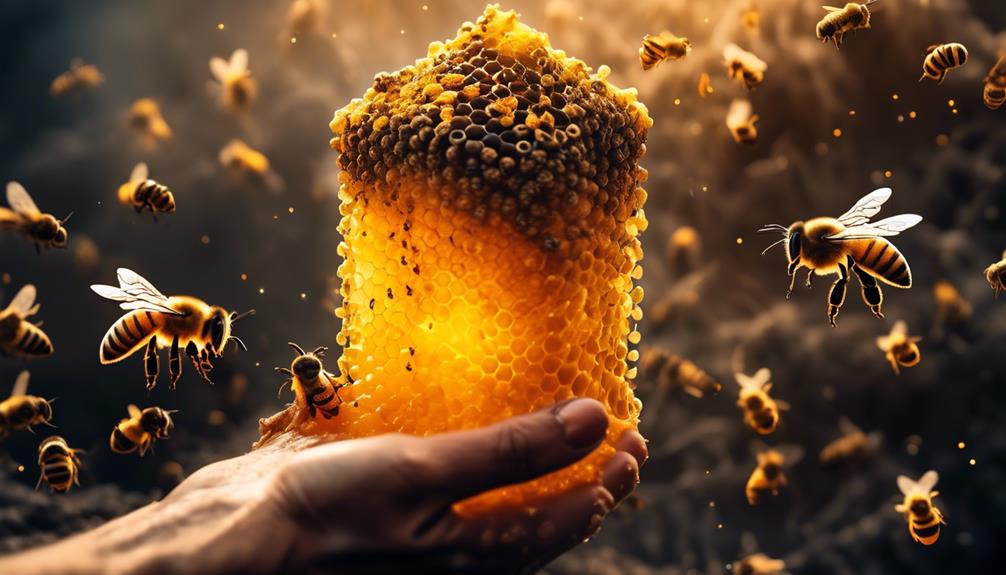
Does Beeswax Clean the Air?
You've likely seen the claims on the label of a beeswax candle, promising not only a soft, natural glow, but also the ability to purify the air in your home. The concept is appealing – a simple, all-natural solution to indoor air pollution.
But does beeswax really have air-cleansing properties, or is it merely marketing hype? Let's explore what the science says about beeswax, air quality, and whether this natural substance can truly clear the air.
Key Takeaways
- Beeswax is composed of esters, fatty acids, and long-chain alcohols, which contribute to its air-cleaning properties.
- When beeswax is heated, it releases negative ions that bind with pollutants in the air, rendering them harmless.
- While burning beeswax candles does produce negative ions, the quantity may not significantly impact air quality.
- Beeswax candles may have potential health benefits, such as boosting mood and reducing stress, as well as anti-inflammatory properties.
Understanding Beeswax Composition
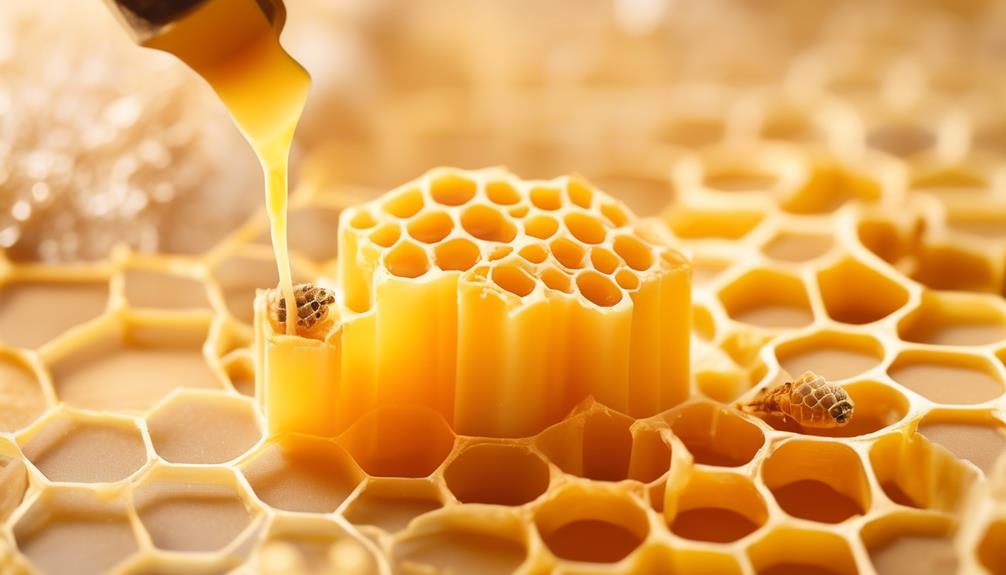
Diving into the composition of beeswax, you'll find it's primarily made up of esters, fatty acids, and long-chain alcohols, a unique blend that contributes to its air-cleaning properties. The presence of esters, for instance, is a key factor. These chemical compounds, formed by condensation of an acid and an alcohol, are known for their strong, pleasant scents and are often used in perfumes and aromatherapy.
When you burn beeswax candles, these esters are released into the air, subtly scenting your environment. But it's not just about aroma. The truth is, these esters also work to neutralize pollutants in the air such as dust, odors, and mold, effectively 'cleaning' the air in your space.
The fatty acids and long-chain alcohols in beeswax also play their part. These components help in the production of negative ions when the beeswax is heated. You should know, negative ions bind with toxins, which are typically positive ions. This process essentially renders these toxins harmless, further enhancing the air-cleaning properties of beeswax.
In this light, it's clear that the composition of beeswax is critically important to its ability to purify the air.
The Science Behind Air Purification

Building on our understanding of beeswax composition, let's explore the science that underpins the process of air purification.
Air purification involves the removal of contaminants from the air in a room. These pollutants can range from dust particles and pollen to harmful bacteria and viruses. Now, you might wonder how beeswax fits into this picture.
The proposed mechanism is that when beeswax candles are burned, they release negative ions into the air. These ions attach themselves to positive ions, which are typically particles of dust, dander, pollen, and other pollutants. The combined weight of the negative and positive ions causes them to fall to the ground, effectively removing them from the air you breathe.
However, it's crucial to note that there's a lack of rigorous scientific research to definitively support this claim. Most studies on air purification focus on high-efficiency particulate air (HEPA) filters and electronic air purifiers, not beeswax products.
Evaluating Beeswax Candle Claims

Often, you'll come across claims that beeswax candles have air purifying properties, but it's important to critically evaluate the evidence behind these assertions. Vendors and enthusiasts often assert that when beeswax candles burn, they release negative ions that neutralize pollutants in the air. However, it's crucial to scrutinize the scientific validity of these claims.
It's true that negative ions can bind to positive ions, including dust particles, allergens, and other pollutants, effectively removing them from the air. This process is a well-documented phenomenon in scientific literature. However, the key question is whether beeswax candles actually produce a significant amount of these ions.
Most studies indicate that while burning beeswax does produce negative ions, the quantity is quite minimal. The amount is likely too small to have a significant impact on air quality. Furthermore, the combustion process of any candle, including beeswax, generates pollutants such as soot and chemical vapors.
Potential Health Benefits of Beeswax
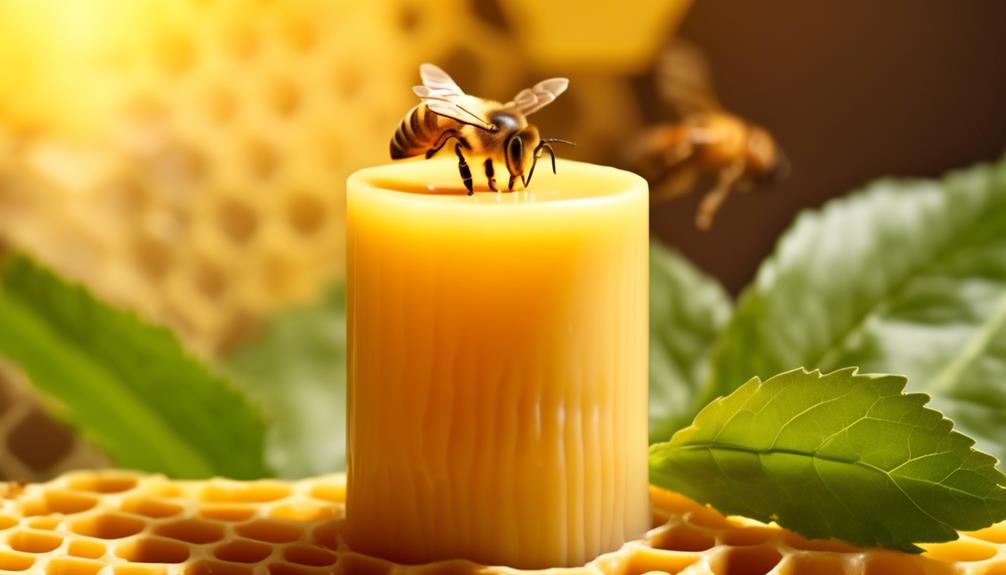
While beeswax may not significantly clean the air, it does offer potential health benefits that are worth considering.
For starters, beeswax candles produce negative ions when burned. These ions are believed to boost mood, increase concentration, and even reduce stress. However, more research is needed to confirm these benefits.
Moreover, beeswax boasts anti-inflammatory properties. It's often used in skin care products, helping to soothe and protect your skin. It forms a barrier against environmental irritants, while also holding in moisture and reducing dryness. This can be particularly beneficial if you're battling conditions like eczema or psoriasis.
Beeswax also contains vitamin A, which supports cell reconstruction and health. This makes it a potentially valuable ingredient in anti-aging skincare products.
In terms of respiratory health, beeswax doesn't produce the soot and smoke associated with paraffin candles. This could help you maintain better indoor air quality and potentially reduce respiratory problems.
Environmental Impact of Beeswax Use
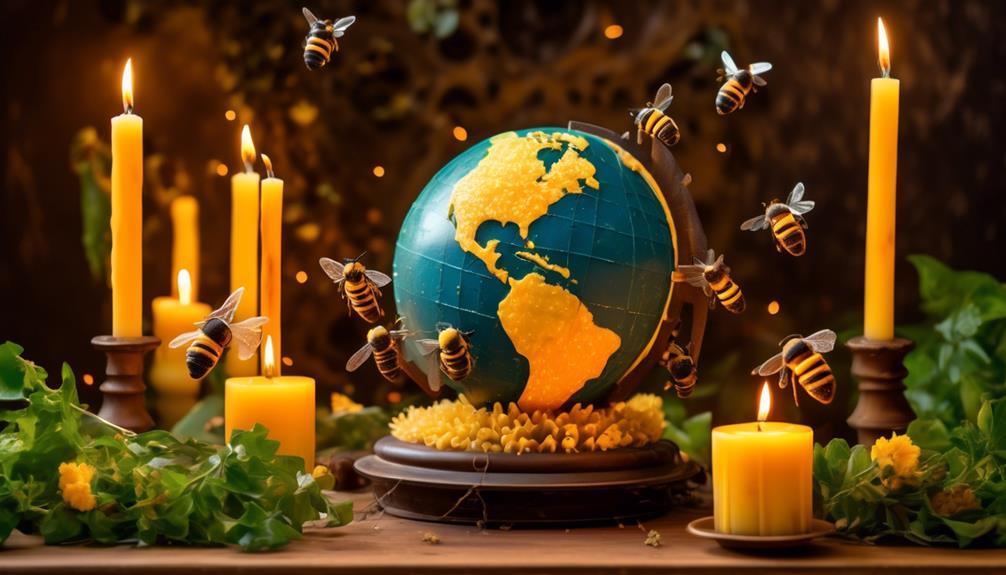
When it comes to the environment, you'll find that using beeswax can have both positive and negative impacts.
On the positive side, beeswax is a natural, renewable resource. Bees produce it as part of their honey-making process, and it's harvested without harming the bees. It's also biodegradable, so you don't have to worry about it clogging up landfills.
However, the negative aspect lies in the fact that bees are currently under threat. Factors like climate change, pesticides, and habitat loss are causing declines in bee populations worldwide. This means that, while beeswax is a renewable resource, it's not an unlimited one. Overharvesting beeswax could contribute to the decline of bees, which would have far-reaching impacts on ecosystems due to bees' role in pollination.
Additionally, the process of extracting and purifying beeswax can be energy-intensive. This, in turn, can contribute to carbon emissions, depending on the source of the energy used.
Frequently Asked Questions
How Is Beeswax Produced by Bees and Collected for Use?
Bees produce beeswax by consuming honey and secreting wax through their wax glands. They shape this into hexagonal honeycomb cells.
You collect beeswax by removing the honeycomb from the hive. This involves scraping off the wax cap that seals the honey in. Once the honey is extracted, the remaining wax is heated to remove impurities.
The end result is pure beeswax, which can be used in a variety of products such as candles, cosmetics, and other goods.
Are There Any Allergies or Adverse Reactions Associated With Beeswax?
Yes, there can be allergies or adverse reactions to beeswax. If you're allergic to honey or bee pollen, you might also react to beeswax. Reactions can include skin rashes, hives, or even difficulty breathing. However, these reactions are rare and most people can use beeswax products without any problems.
If you've never used beeswax before, it's a good idea to patch test a small amount on your skin first.
How Does the Burning of Beeswax Candles Compare to Other Types of Candles?
When you burn beeswax candles, they emit negative ions, unlike most other types of candles. These ions attract pollutants, effectively cleaning the air.
Moreover, beeswax candles burn slower and produce less soot, making them a healthier, more economical choice.
They're also naturally scented by the honey and floral nectar in the honeycomb, providing a mild and pleasant aroma.
What Other Uses Does Beeswax Have Aside From Air Purification?
Aside from purifying air, you'll find beeswax has many other uses.
It's a key ingredient in cosmetics like lip balm and lotion, providing a natural, moisturizing touch.
In the culinary world, it's used as a coating for cheese to preserve freshness.
You'll also find it in furniture and shoe polish due to its protective properties.
It's even used in candle making, offering a cleaner burn compared to paraffin.
How Does the Cost of Beeswax Products Compare to Other Air Purifying Alternatives?
When comparing the cost of beeswax products to other air purifiers, you'll find it varies.
Some beeswax candles can be pricier than traditional candles or basic air fresheners.
However, compared to advanced air purifying systems or high-end purifying candles, beeswax options can be less expensive.
It's essential you consider the longevity and effectiveness of each product, not just the upfront cost.
Over time, beeswax products might prove more cost-effective due to their natural, long-lasting properties.
Conclusion
In conclusion, while beeswax doesn't 'clean' the air in the traditional sense, its natural properties can contribute to a healthier environment. When used in candles, it emits negative ions that can help neutralize pollutants.
Plus, beeswax offers potential health benefits such as reducing allergies. However, its environmental impact is a complex issue.
It's clear, though, that beeswax does have a unique role to play in our overall wellness.

